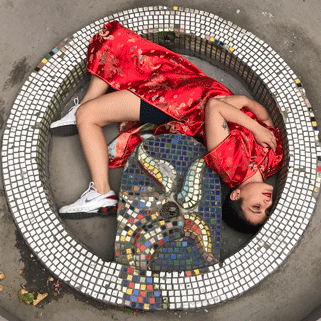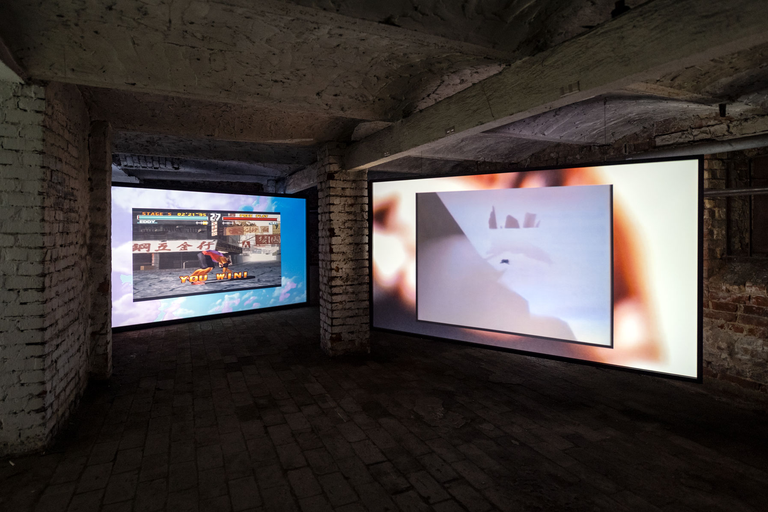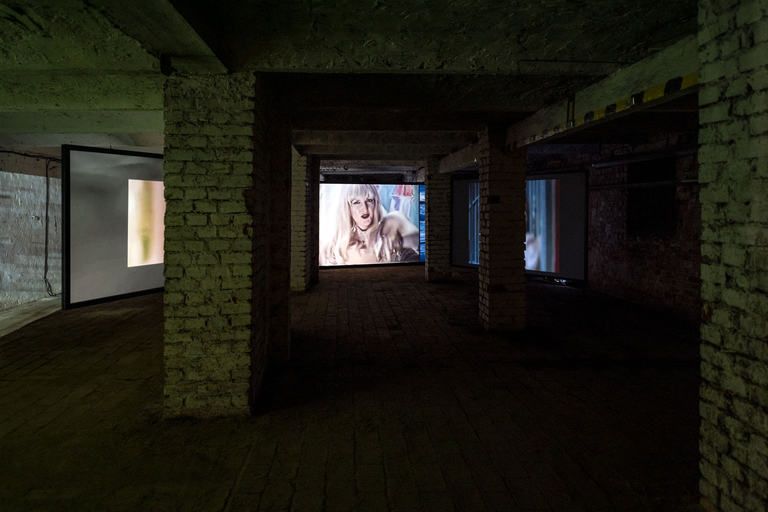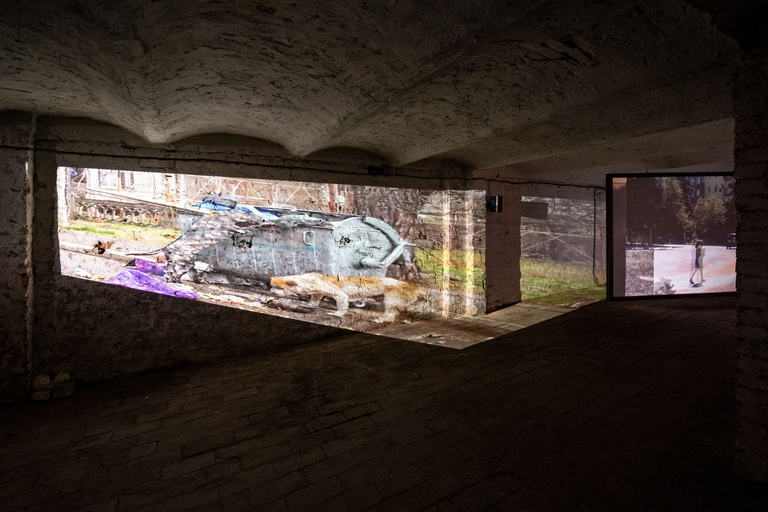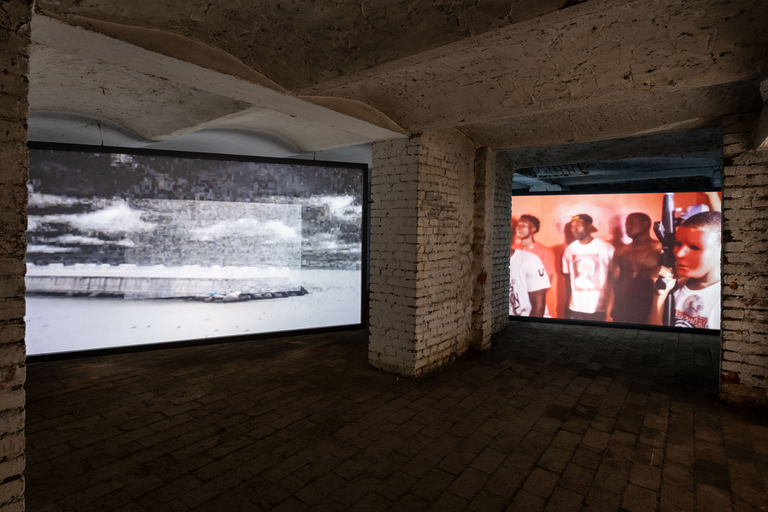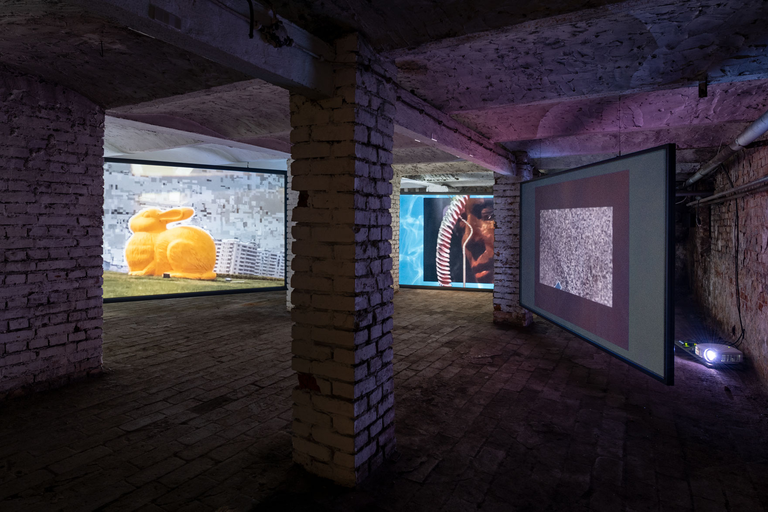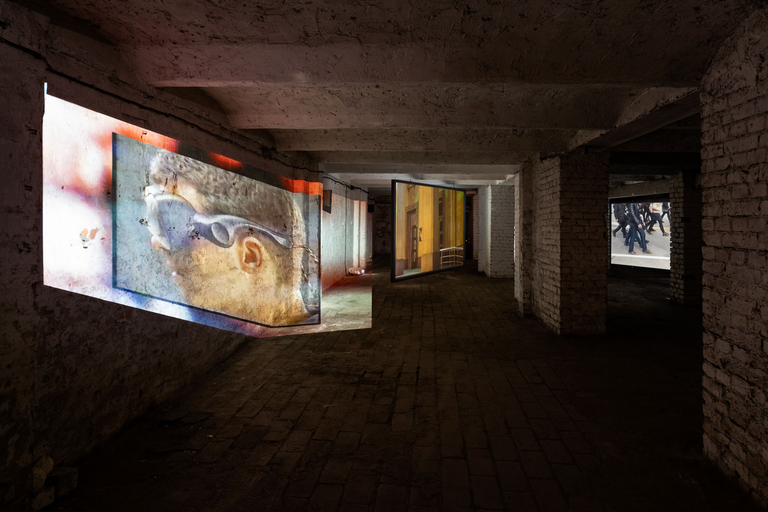Survival Art Review
Art Transparent Foundation, Wroclaw, Poland
3 Channel Video installation
May, 2023
The word ersatz (from the German „ersetzen” – to replace) came into use during World War I. It denotes a substitute for a thing or activity, a counterfeit of something highly desirable – usually of inferior quality, but sharing characteristics with the original. Ersatz was used for literally everything, from food products to women in the workplace substituting men called up to the military. Ersatz was also of great importance in calming public sentiment, and it was skillfully exploited – for instance, a coffee-like beverage could be offered, or a fake free media could be created. Times of authoritarian rule showed that ersatz could be used to effectively pull the wool over everybody’s eyes, even on a large national scale.
The word was gradually introduced into Polish as erzac, having been adapted from wartime jargon to denote efficiency in the face of the demands of temporary scarcity, which draws attention to the intertwined economic and geopolitical perspectives shaping our region. Post-communist Poland, and perhaps all of Eastern and Central Europe, was built on shock therapy, a flood of counterfeits and the belief that by not moving too much, one could find oneself on the Western, rather than the Eastern, side. Some interpretations of the political transformations in this part of Europe argue that their principle was a somewhat clumsy mimesis, an imitation of the West. However, the question of whether imitation has become nature or an obvious fake is related to the moment when the value of the original is re-appraised in the face of war and the crisis of liberal democracy. Is it possible for such an ersatz to turn into something good by nature? Can imitation gain its independence?
The sound art of the Western civilization is full of attempts at perfect imitation. The musical notation was intended to enable the reproduction of an ideal performance, while sound synthesizers aspired to the sound of classical instruments. While radio wanted to give the impression of a concert hall, sound in cinema became an art of imitating reality. Fountains and all recordings of nature are meant to create an alternate, soothing soundscape. The human mind has an extraordinary ability to adapt the perception of sound to reality (or its imitation), which, as a tool of sound studies, makes it possible to look for meaning in vibrations and spatial resonances that elude the mimetic function.
Ersatz has always been a manifestation of class divisions, while the transition from “fake” to original has been one of the clearest symbols of economic advancement. However, from the perspective of a global economy that often locates both the production of originals and their counterfeits in the same place, the very question of the role of imitation often turns out to be about intangibles. Privileged groups, i.e. those who have the power to mark and sanction the authentic, will even resort to jumping into the unknown in the race for resources and supremacy. This is evidenced by the AI revolution taking place before our eyes (at its origins conceived as an imitation of human intelligence), which will perhaps mark the beginning of the end of both economics and social organization as we know it.
The history of the visual arts leads from representation to abstraction and beyond – for example, through readymade items or appropriation art. It is as if representation was forced to burst its own framework over time – through disintegration or synthesis, the inclusion and consecration of what was not art before, or finally through repetition. However, the already extremely illusionistic images could only be perceived aesthetically by stepping out of the state of fiction – the realization that one was experiencing an imitation. The tension between original and imitation is so important in the field of art that it has generated a whole series of aesthetic, technical and even market considerations and distinctions. It is in art that the notion of the original as unique – the one and only product, incompatible with the reality of branding and mass production – has survived. On the other hand, the history of fakes and counterfeits is as long as the concept of the original work itself, and abounds in examples in which imitation played the main role.
Curated by Małgorzata Miśniakiewicz
Photo by Małgorzata Kujda
This artwork has been commissioned for 21st Survival Art Review by the ArtTransparent foundation
